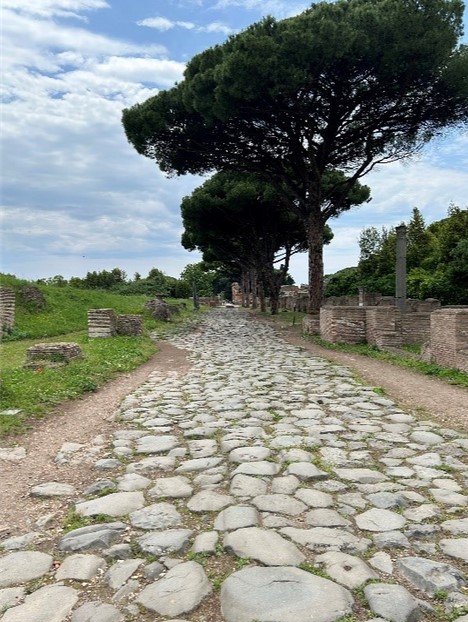Tags
BGSU History, BGSU Study Abroad, Casey Stark, Jo Enger Arthur Scholarship for Study Abroad, Nathaniel Brooks, Ostia Antica, Roma Aeterna, Rome, Undergraduate
By Nathaniel Brooks, BGSU Roma Aeterna 2023 Student
The figure above shows the central road through which traffic and shipments would flow in and out of Ostia Antica. The city, its name Latin for “ancient entrance”, once sat at the mouth of the Tiber River and on the coast of the Mediterranean Sea. This prime location made it of strategic importance to whatever power held it. Situated barely 25 kilometers west of Rome, it would be under their influence that the city prospered and grew. According to the ancient historian Livy, the city was founded by the fourth king of Rome, Ancus Marcius, during the middling days of the monarchy. Throughout much of this period, Ostia Antica would act as the westernmost border of Rome’s territory (Livy 1.33). If Livy’s claims are to be taken as fact, that would make Ostia Antica one of, if not the first of Rome’s colonies. Given Rome’s position on the Tiber but dozens of kilometers away from the sea, founding a port city was an important step in expanding their interests in the Italian Peninsula. Today, Ostia Antica sits abandoned, a rare glimpse of the remains of an ancient city like that of Pompeii. But it was decline, rather than natural disaster, that spelled the end of it. Ostia Antica began as a singular and vital port for Rome, but as the empire expanded and the center of power shifted away from Italy, it began a period of decline that would culminate in the city’s eventual abandonment.
Continue reading
